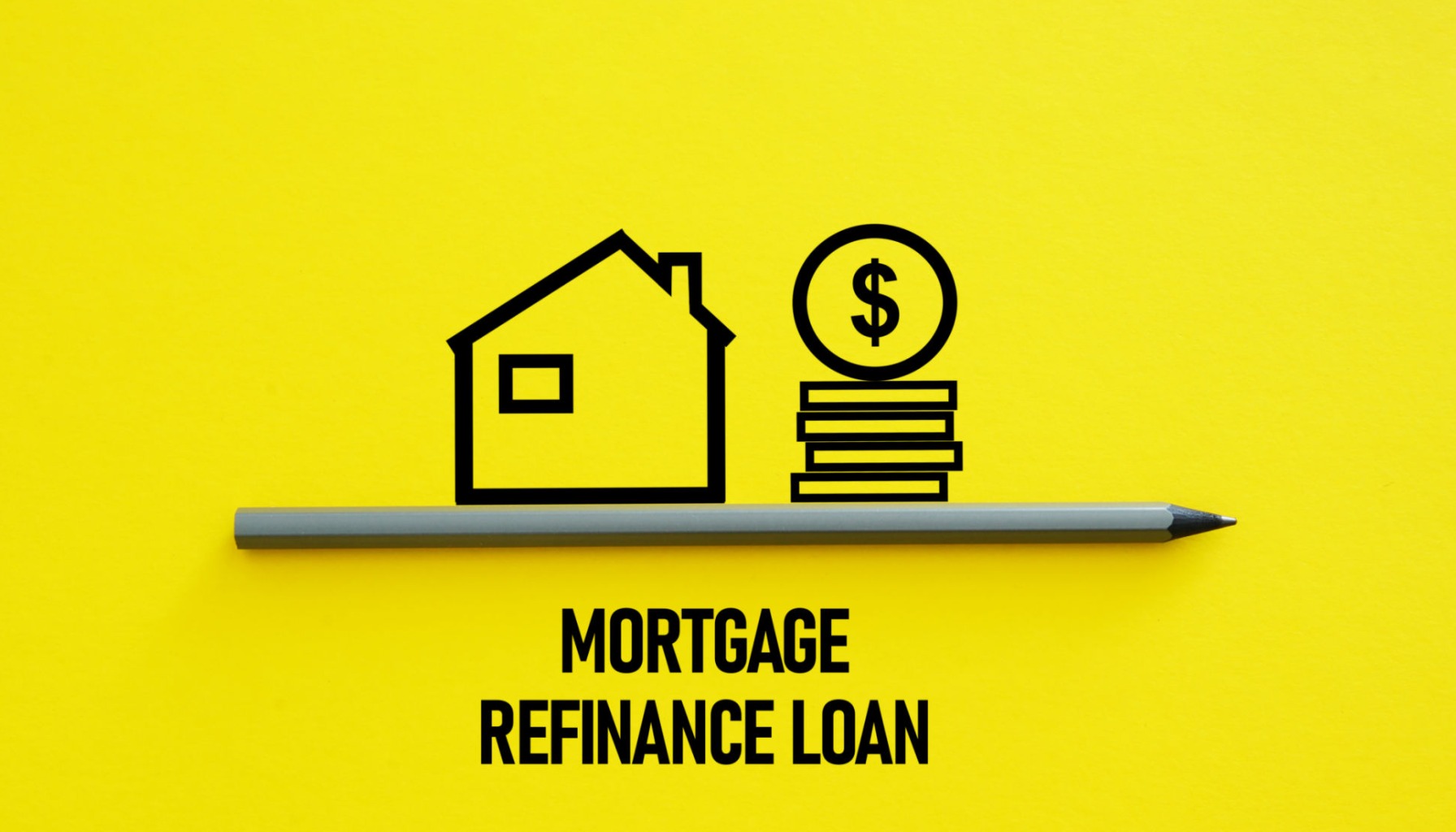If you've been keeping an eye on the financial news, you might have noticed a slight bump in mortgage rates. On November 4, 2025, the average 30-year fixed refinance rate jumped up by 13 basis points compared to the previous week, reaching 7.00%. This means that if you're looking to refinance your home loan, securing a rate might be a bit more expensive than it was just a few days ago. While this might sound like a small change, for homeowners, this upward tick in mortgage rates today can translate into noticeable differences in monthly payments.
The Federal Reserve's actions, inflation, and the overall health of the economy all play a role in determining where mortgage rates land. While a 13 basis point increase might not sound like a lot, it's a signal that the seemingly smooth ride down for mortgage rates might be hitting some turbulence.
Mortgage Rates Today, November 4: 30-Year Refinance Rate Rises by 13 Basis Points
Understanding the 13 Basis Point Shift
Let's break down what a 13 basis point increase actually means in real-world terms. A basis point is simply one-hundredth of a percentage point. So, a 13 basis point rise means a 0.13% increase.
For someone looking to refinance a $300,000 loan, this might mean:
- Old Rate (hypothetical): Let's imagine the rate was 6.87% (the previous week's average).
- New Rate: 7.00%
- Monthly Principal & Interest Payment Difference: On average, this could mean an increase of around $25 to $35 per month.
While $25 might not seem like much, over the life of a 30-year mortgage, this adds up. It’s also important to remember this is just one factor. Your actual payment depends on your loan amount, credit score, and the specific lender. However, this data from Zillow clearly shows a trend that homeowners should be aware of.
The Bigger Picture: Fed Actions and Market Uncertainty
To understand why mortgage rates are moving, we need to look at what the Federal Reserve is doing. Recently, the Fed made another move: they cut their benchmark interest rate by 0.25 percentage points, bringing the target range to 3.75% to 4.00%. This is their second cut in a row, and it signals they're paying attention to signs that the economy might be slowing down, especially with concerns about jobs.
However, it's not all clear skies. Fed Chair Powell has been cautious with his words, saying that another rate cut in December isn't a “foregone conclusion.” This is because the economic signals are mixed, and some economic data has been harder to get a handle on lately due to things like government shutdowns. This mixed messaging creates uncertainty in financial markets, and that uncertainty directly impacts how lenders price mortgages.
Key Takeaways from the Fed's Decision:
- Rate Cut: A continued effort to stimulate the economy.
- Divided Vote: Not everyone on the Fed's decision-making committee agreed on the cut, showing internal debate.
- Cautious Outlook: The Fed is watching economic data very closely before making future decisions.
- End of QT: Starting December 1, 2025, the Fed will stop reducing its asset holdings, which could provide some stability to financial markets.
Why Economic Signals Matter for Your Mortgage
The economy is a complex puzzle, and the Fed is trying to put all the pieces together. On one hand, they see signs that the job market might be weakening, which is a reason to lower interest rates. On the other hand, prices for goods and services are still higher than their target, meaning inflation is still a concern. When inflation is high, it can push interest rates up because lenders need to get a return that keeps pace with rising costs.
The government shutdown has also made it tougher for the Fed to get reliable economic data, making their job of predicting the future even more challenging. This is a crucial point for us as consumers – when the economic picture is fuzzy, so are the future predictions for mortgage rates.
Market Reaction: Volatility and What to Expect
As soon as Chair Powell's remarks about the cautious outlook were released, the financial markets reacted. The yield on the 10-Year Treasury, which is a key indicator for mortgage rates, went up. This tells us that investors are adjusting their expectations for future interest rate cuts.
What does this mean for you?
- Near-Term Stability: Instead of seeing mortgage rates continue to drop sharply, we might see them level off for a bit, likely in the mid-6% range.
- Increased Sensitivity: Markets will be paying very close attention to every piece of economic news that comes out, especially as government shutdowns resolve.
- December Uncertainty: The Federal Reserve's commitment to being “data-dependent” means that the December meeting could bring surprises.
- Support for Mortgage Markets: The end of the Fed's asset reduction program (Quantitative Tightening) could provide some underlying strength to the mortgage market, potentially capping steeper rate increases.
Refinancing: Timing is Everything
For homeowners who have been dreaming of refinancing their mortgage, understanding these movements is critical. Based on the data from Zillow and the economic signals, here's my take:
Comparing 30-Year Fixed vs. 15-Year Refinance Options
- 30-Year Fixed Refinance Rate: Currently at 7.00%, up 13 basis points from the previous week. This offers a lower monthly payment compared to a 15-year loan, but you'll pay more interest over the long run.
- 15-Year Fixed Refinance Rate: This has also seen an increase, now averaging 5.94%, up 10 basis points. While the monthly payments are higher, you'll pay off your mortgage faster and save significantly on total interest.
- 5-Year ARM Refinance Rate: This is currently at 7.54%, an increase of 9 basis points. Adjustable-rate mortgages (ARMs) often start with a lower rate, but that rate can increase after the initial fixed period.
What this means for refinancing:
If you have a mortgage rate significantly higher than 7.00%, you might still find a good refinance opportunity. However, the best rates we've seen in this cycle might have passed us by for now. The path to even lower rates looks like it might be a bit more winding than we anticipated.
What a 13 Basis Point Increase Means for Monthly Payments
As we saw earlier, even a seemingly small jump can add up. If you were on the fence about refinancing, this subtle increase is a good nudge to re-evaluate your situation.
Refinance Timing: Locking in Rates Before Further Hikes
My personal opinion, based on the data and the cautious tone from the Fed, is that homeowners considering a refinance should seriously think about locking in their rate soon. While we can't predict the future with certainty, the current environment suggests that further significant drops might not be immediate. Waiting for potentially lower rates could also mean facing higher ones if economic conditions shift unexpectedly.
Impact of Inflation on Mortgage Rates
Inflation is a persistent challenge for the Federal Reserve, and it has a direct impact on mortgage rates. When inflation is stubbornly high, the Fed is hesitant to lower interest rates aggressively. In fact, they might even consider raising them to cool down the economy. This means that as long as inflation remains above their 2% target, we're likely to see mortgage rates stay elevated. The mixed economic signals mean the Fed is walking a tightrope, trying to tame inflation without tipping the economy into a recession.
Recommended Read:
30-Year Fixed Refinance Rate Trends – November 3, 2025
How Market Trends Influence Mortgage Rates
Beyond the Fed's actions, broader market trends and investor sentiment play a huge role. When investors are confident about the economy or expect higher inflation, they tend to demand higher yields on government bonds. This increased demand for higher yields directly pushes up mortgage rates. Conversely, economic uncertainty or fears of a recession can lead investors to seek safer assets, which can temporarily lower yields and, consequently, mortgage rates.
The end of the Fed's quantitative tightening (QT) is a technical factor that could provide some market support. QT is when the Fed reduces the size of its balance sheet by not reinvesting the proceeds from maturing bonds. Ending this process signals a shift in monetary policy and can have a stabilizing effect on bond markets, which, in turn, can help cap any rapid increases in mortgage rates.
Housing Market Implications
For those looking to buy a home, the current situation is still more favorable than it was at the peak of last year's market. However, the rapid improvements homebuyers might have hoped for could be slowing down. For sellers, steady demand is expected, but the pace of sales might moderate.
For Borrowers:
- If you're considering refinancing, it's wise to shop around for the best rates and consider locking in a rate if you find one that meets your goals.
- Don't wait too long if you're on the fence – the economic forecast is still a bit uncertain.
For Market Watchers:
- Keep a close eye on upcoming economic reports, especially those related to inflation and the labor market. These will be key in shaping the Fed's decisions.
The financial markets are always a dynamic place, and understanding these interconnected forces – the Fed's policy, inflation, economic data, and market sentiment – is crucial for making informed decisions, especially when it comes to something as significant as your mortgage.
“Invest Smart — Build Long-Term Wealth Through Real Estate”
Norada's team can guide you through current market dynamics and help you position your investments wisely—whether you're looking to reduce rates, pull out equity, or expand your portfolio.
Work with us to identify proven, cash-flowing markets and diversify your portfolio while borrowing costs remain favorable.
HOT NEW TURNKEY DEALS JUST LISTED!
Speak with a seasoned Norada investment counselor today (No Obligation):
(800) 611-3060
Recommended Read:
- When You Refinance a Mortgage Do the 30 Years Start Over?
- Should You Refinance as Mortgage Rates Reach Lowest Level in Over a Year?
- NAR Predicts 6% Mortgage Rates in 2025 Will Boost Housing Market
- Mortgage Rates Predictions for 2025: Expert Forecast
- Half of Recent Home Buyers Got Mortgage Rates Below 5%
- Mortgage Rates Need to Drop by 2% Before Buying Spree Begins
- Will Mortgage Rates Ever Be 3% Again: Future Outlook
- Mortgage Rates Predictions for Next 2 Years
- Mortgage Rate Predictions for Next 5 Years
- Mortgage Rate Predictions for 2025: Expert Forecast



